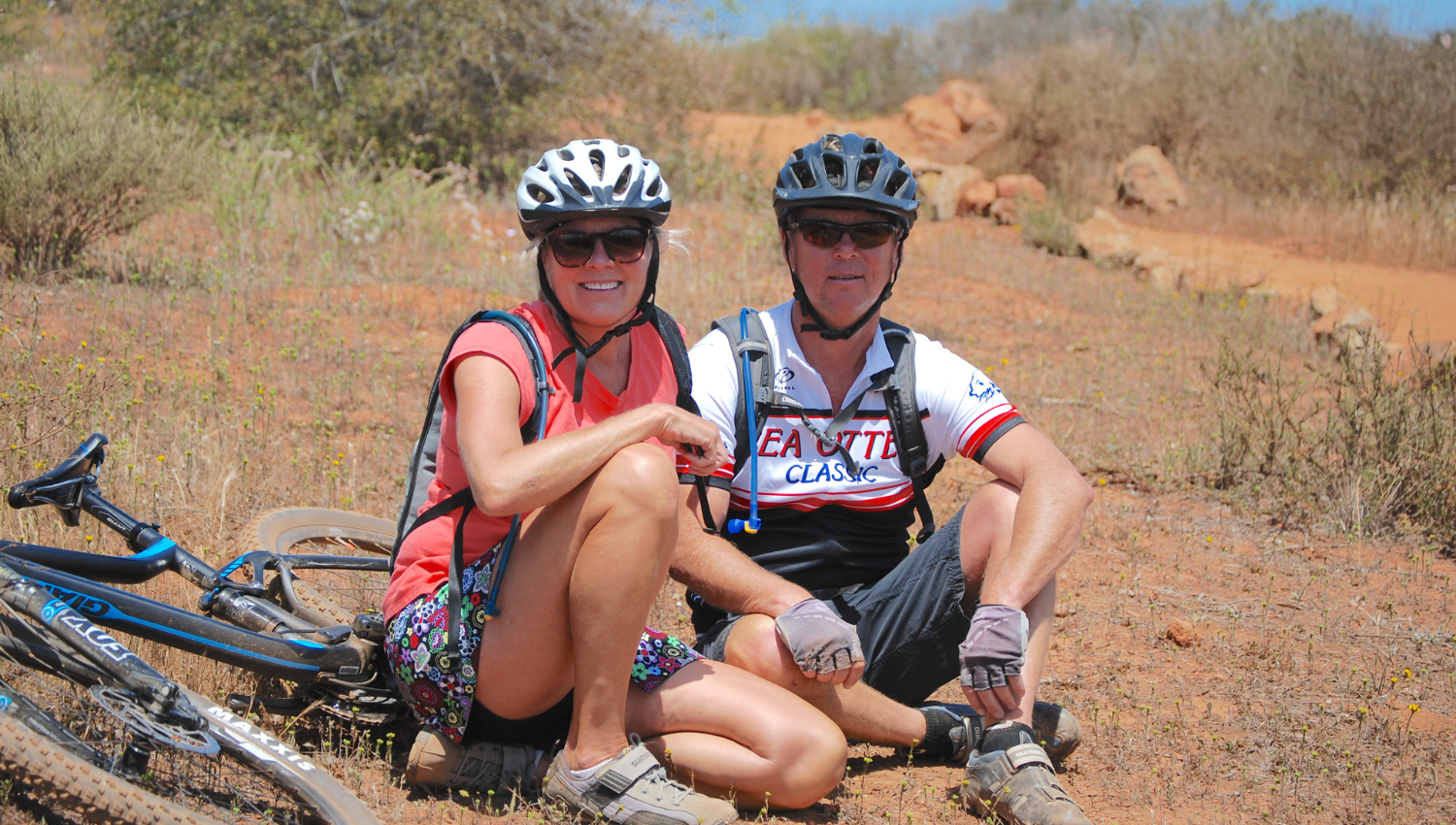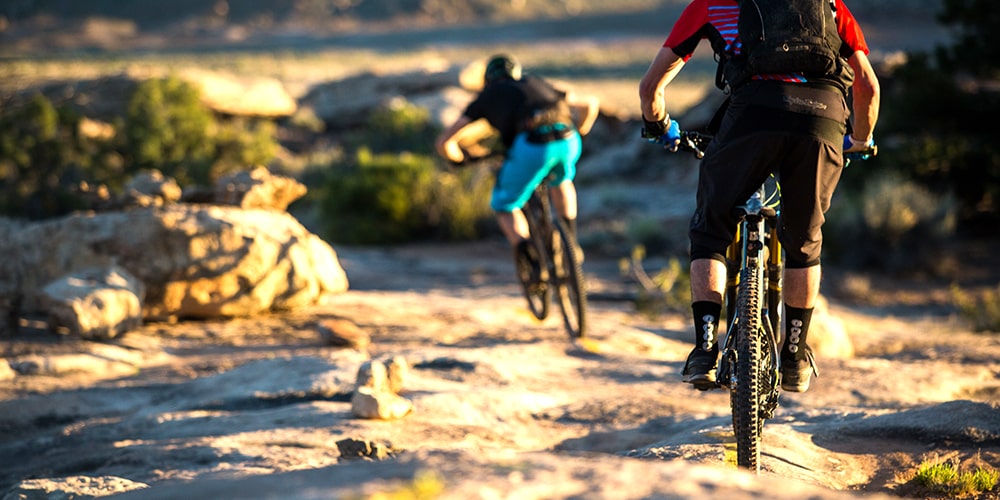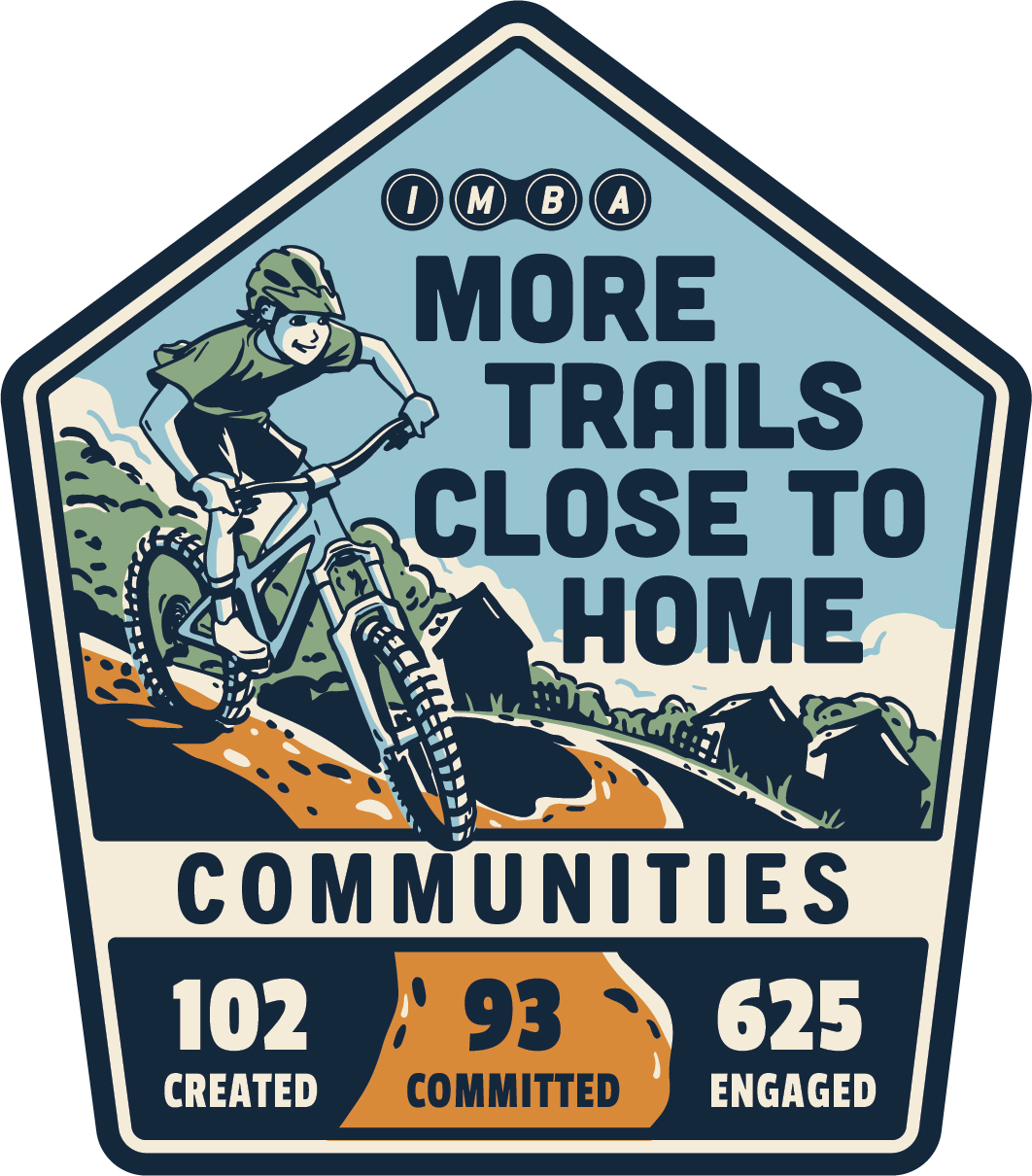Celebrating Women’s Mountain Biking Day 2025
We’ve all been there. You are on your bike, loving life, riding through some of the most pristine countryside in your area on shared-use trails. You’re cruising, crushing dirt in true mountain bike fashion. Then you come up behind a hiker, a bird-watcher, or another person also out there on the trail, also loving life, and usually moving at a slower pace. You start to sputter, “Oh, hi! Uh… On your left!” You grab the brakes. Sometimes they hear you right away and jump to the side. Sometimes you startle them as you ride around, or you slow and wait. And then, the glare: a moment of miscommunication and reaction that for sensitive mountain bikers is both embarrassing and frustrating. The result: you feel bad. All the smiles you can share don’t quite get the “dang, I totally freaked that person out,” out of your head. Most of us have been both people in this scenario: the biker and the hiker. It doesn’t feel super great to be on either side.
It was an experience like this, riding in the idyllic and popular Elfin Forest of Southern California, that spurred a round of compassionate, curious brainstorming by a couple of surfer/mountain bikers that eventually led to a rad tool for responsible riding: the Timber! Mountain Bike Bell.

Chris and Liz Lacy live near the coast in San Diego and love to surf. The finicky nature of the tides and currents sometimes makes it necessary to choose another outdoor activity. Since they ride their bikes to the beach, when the weather isn’t great, they just keep riding. They ride mountain bikes both for both physical health and outdoor activity; to navigate and orient themselves among the history and natural beauty of the world; and to explore the places, flora, and fauna where they travel. In southern California, among some of the highest rates of population density in the nation, some close-to-home favorite places such as Los Peñasquitos Canyon have been well-utilized by humans for over 7,000 years, and still are. Given this, it is expected that folks will be sharing trails in SoCal. So, after experiencing that feeling of “dang…” after coming upon a hiker, and feeling unwelcome on trails they love, Chris and Liz spent the rest of their ride talking about solutions. How could mountain bikers contribute to the sense of welcome for everyone through effective on-trail communication?
Goal: Clear, Compassionate Communication
Chris and Liz couldn’t stop the brainstorming of ideas or turn off their empathy. Having grown up around horses, and with the experience of passing folks on horseback, Chris was familiar with the startling nature of a shout or a loud ring. They both had experience with trail users who used cowbells and bear bells and knew the sounds could be loud, and even irritating. Seeking a solution, they reflected on a sailing trip when they heard the sounds of bells worn by goats in Grecian hills. The sound was peaceful, and organic, and it added to the beauty of the experience. That was the phenomenon they needed for their solution: an antithesis of shouts and honking horns, that enhanced the natural beauty versus disrupting it, that contributed to comfortable, clear on-trail communication.

Not Just Any Bell
Call to memory the sound of a bicycle bell. It is shrill. It slices through the environment, overcoming traffic noise, to garner reaction. Cowbells and bear bells also garner a reaction due to their loud, persistent, and abrupt nature. In the way that lumberfolks call “Timber!” to ensure people around would know of a falling tree and can respond in time, Chris and Liz wanted a sound that could be activated and deactivated based on need, and that communicated a message versus simply catching attention.


So, in November of 2012, they started inventing prototypes for a bell that didn’t require active shaking by the user, and that, to accommodate the bumpy nature of mountain biking, could be turned off when it wasn’t needed. For more than 13 months, Chris and Liz played with a design similar to a cowbell with an on/off switch.


Around this time, UPS was piloting making 3D printers available in stores across the country. As luck would have it, a UPS Store not far from their home was one of the 5 pilot sites selected. With ideas flowing, and little tweaks to test, Chris and Liz printed all six parts for the bell hundreds and hundreds of times. Eventually, they had a prototype that was ready for a first run.

Proof of Concept
Symbolically, the Timber! Mountain Bike Bell had its proof-of-concept run at Bell Rock in Sedona, AZ. Bell Rock Trail is beautiful and busy. There are always lots of tourists, and the trail starts with an intense downhill section. Right before Chris and Liz started their ride, a tour bus let off dozens of people who were all over the trail. Chris and Liz rode up behind the tourists, using their Timber! Bells. When people heard the bells, they started parting to let the mountain bikers through. There were no shouts or glares. The reactions of the other trail users were innate: a turn-around, a wave, and a thank you. Niceties and smiles were shared. Chris and Liz, lifelong entrepreneurs, knew they had something that worked and that mountain bikers would want.

That wasn’t the end of the testing and prototypes, though. It was another two full years before they had something they thought they could put on the market. They worked to ensure they had a product that contributed to clear, compassionate trail communication, and that looked good on a mountain bike.

Timber! In the Wild
Timber! Mountain Bike Bell is now used all over the U.S., and the world. Chris and Liz have seen their invention on mountain bikes on trails in Colorado, Utah, Wyoming, Idaho, and Arizona. The Routt County Riders, an IMBA Local Chapter in Steamboat Springs, Colorado have been huge supporters of the bell, and other IMBA chapters have purchased bells for club utilization to promote good #RideVibes among their trail users.
Although the bell was designed for mountain bikers, it is also used in other ways. Some put the bells on their dogs (and/or children) so they know where they are when hiking off-leash, and some people wear the bells so their dogs and children can hear where they are. Some put the bell on their ski poles, so other alpine skiers and snowboarders can hear them coming downhill from behind. You might see one on baby running or jogging strollers, and we’ve even heard of a U.S. Forest Service professional keeping a Timber! bell on his chainsaw!
What the Future Holds
Chris and Liz created an innovative tool to create on-trail communication and good #RideVibes, and they’re not done yet. The Timber! Mountain Bike Bell is on its third major design, and this third iteration was to make it durable – so it lasts forever – even through gnarly crashes. With the current model, all the parts are replaceable so if anything breaks, you can pop it off, order a new part, and fix it yourself, saving space in landfills and money.
So, what’s next for the Timber! bell? Liz dreams of a family of bells with different timbres, so users can choose a different sound for a riding buddy or furry companion and identify who it is by the unique timbre: the character and quality of its musical sound, pitch, and intensity. Liz and Chris both dream of their product contributing to rider education, helping to build multi-user communities, and participating in the process of keeping trails open by sharing kindness.
Thinking has shifted. What didn’t feel like a cool idea (bells are for nerds?), now feels like the right thing to do. Using a bell for trail communication is an easy way to contribute to great on-trail experiences. Use a bell. Wave. Smile. Yield. And create good #RideVibes everywhere you ride!









